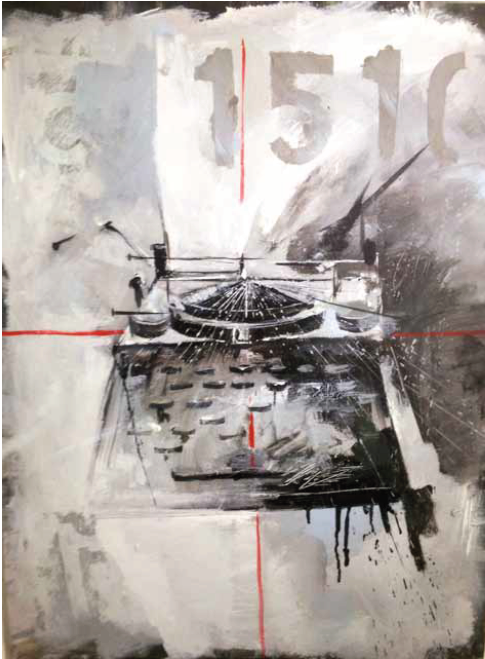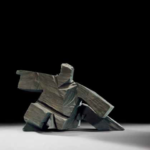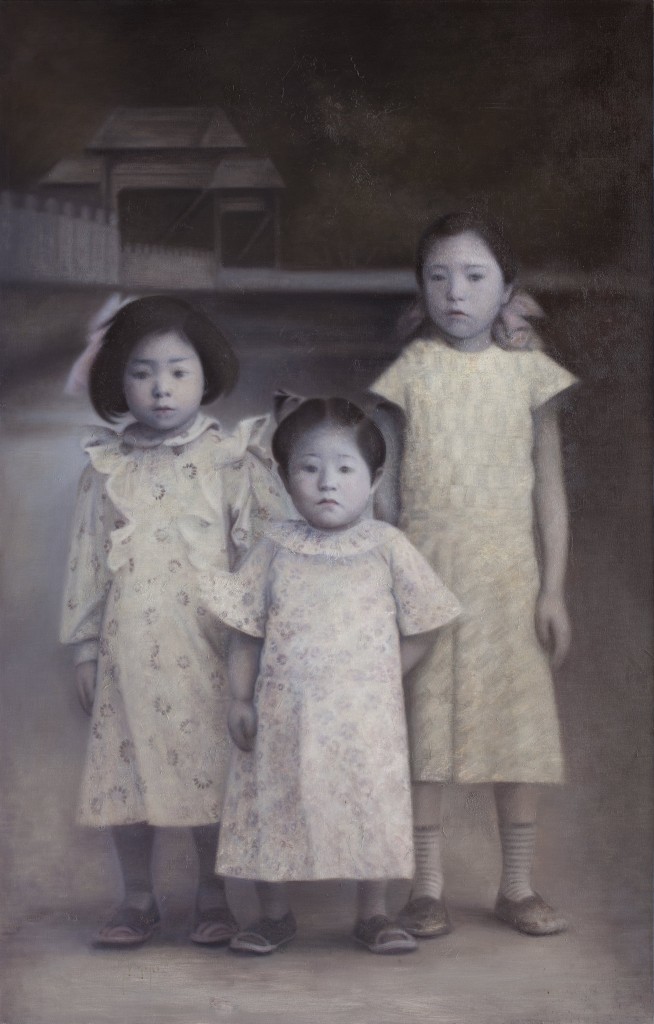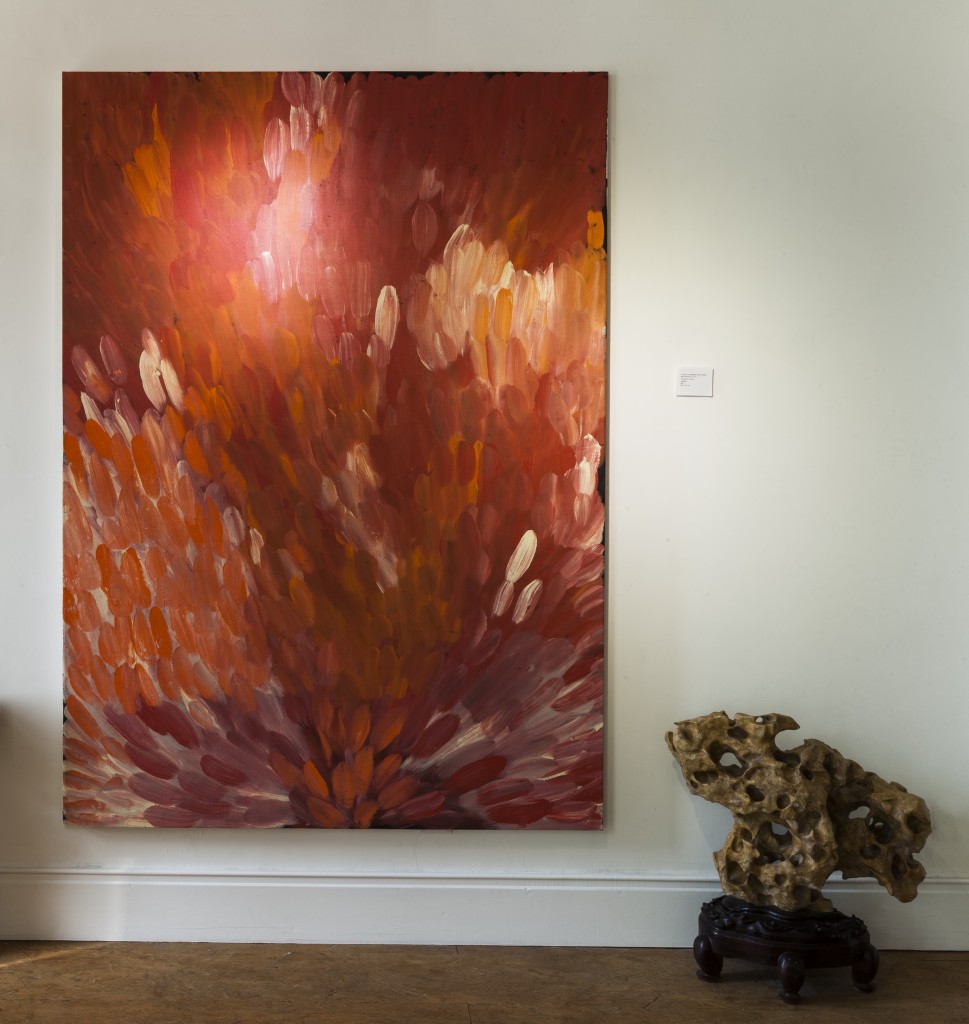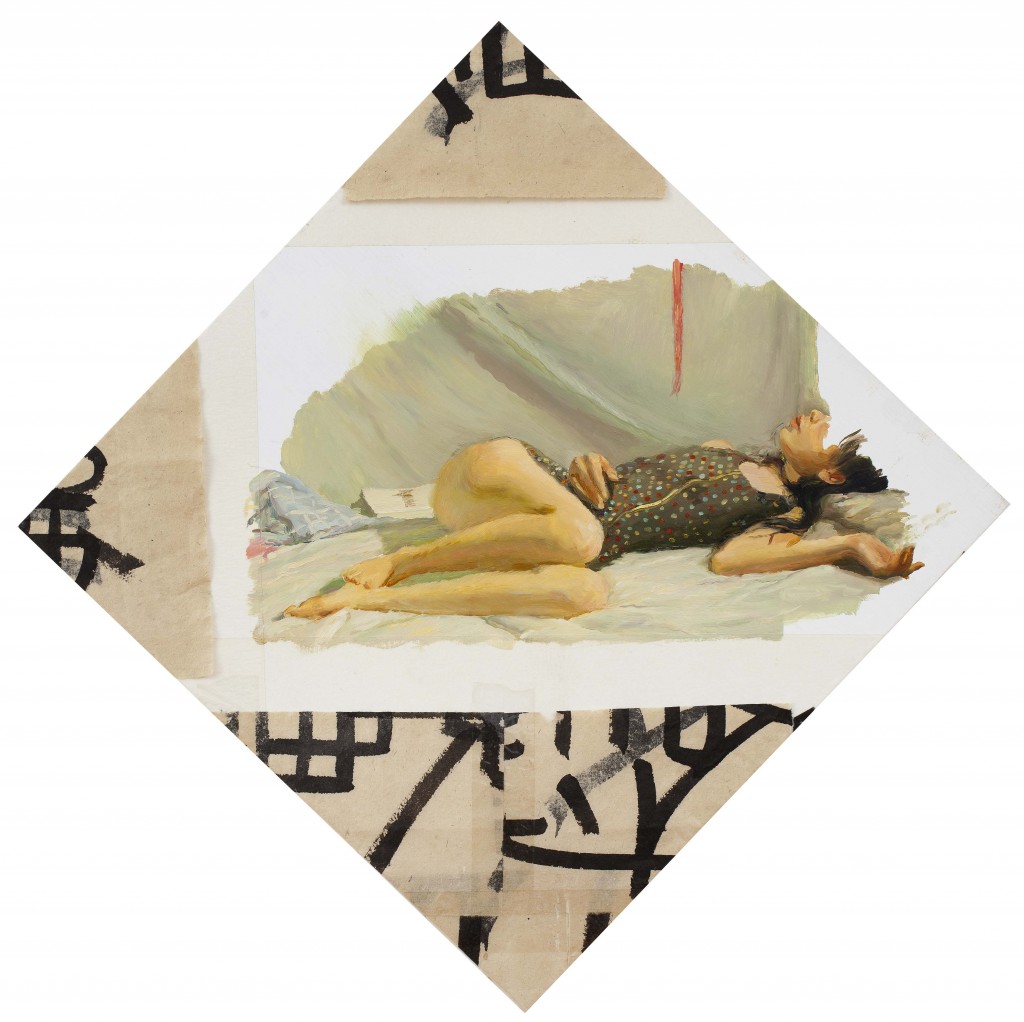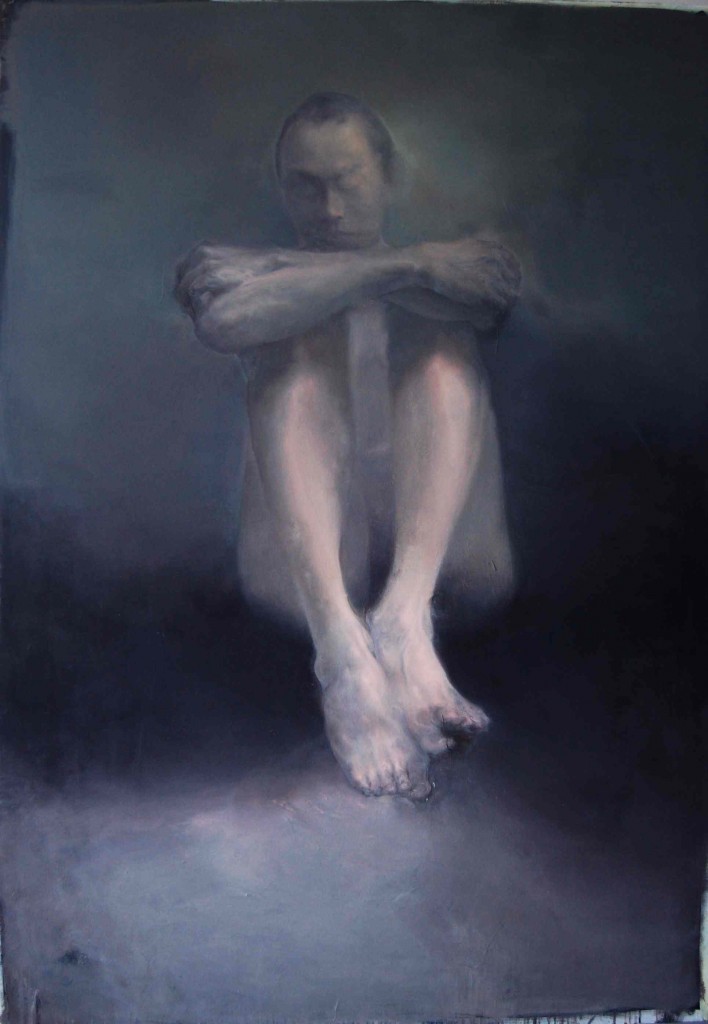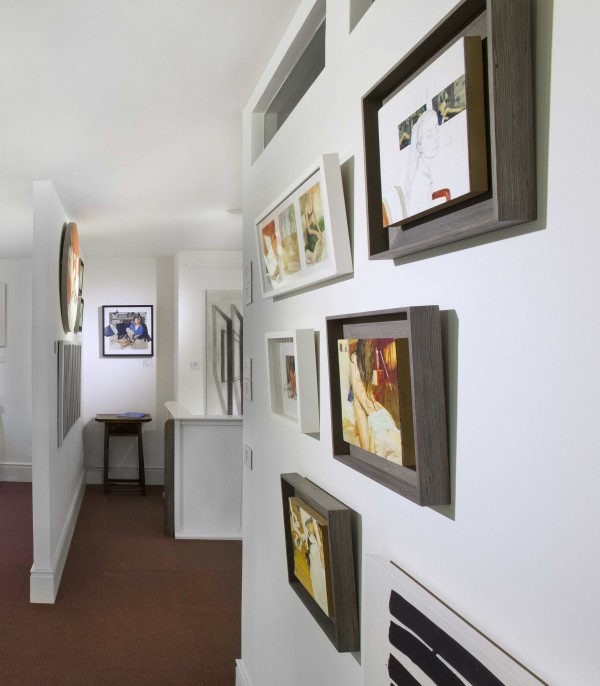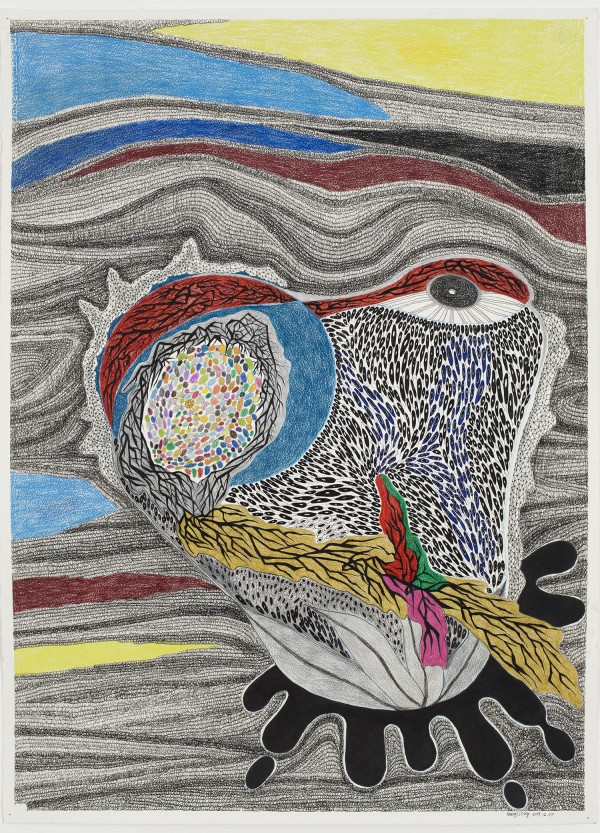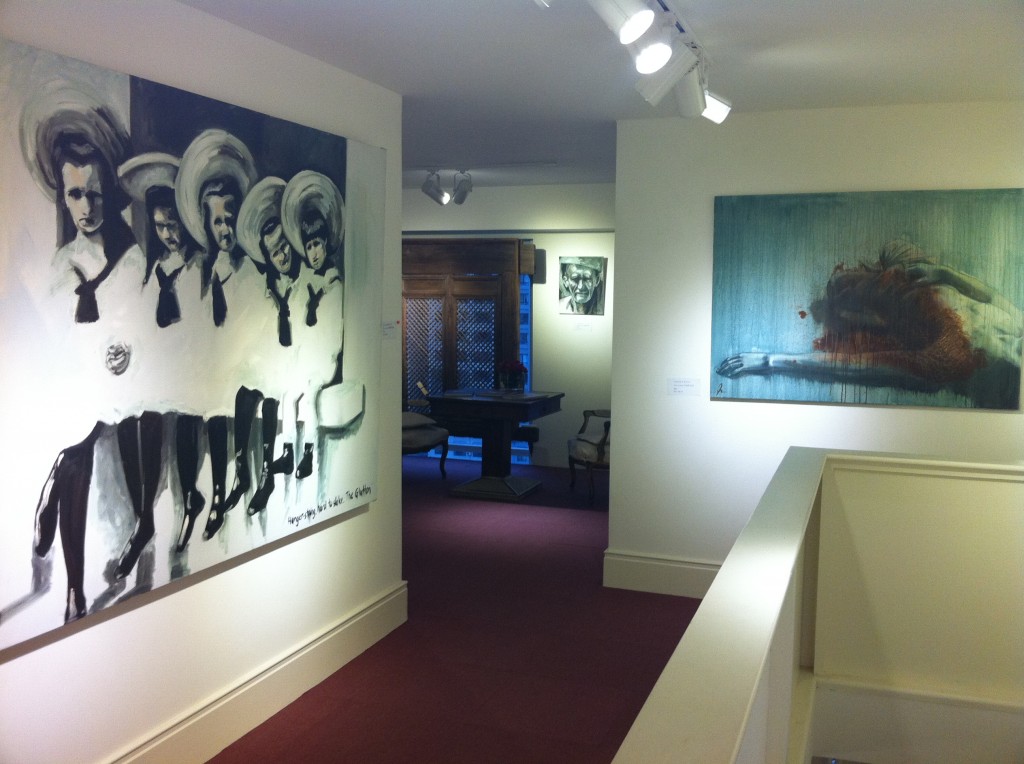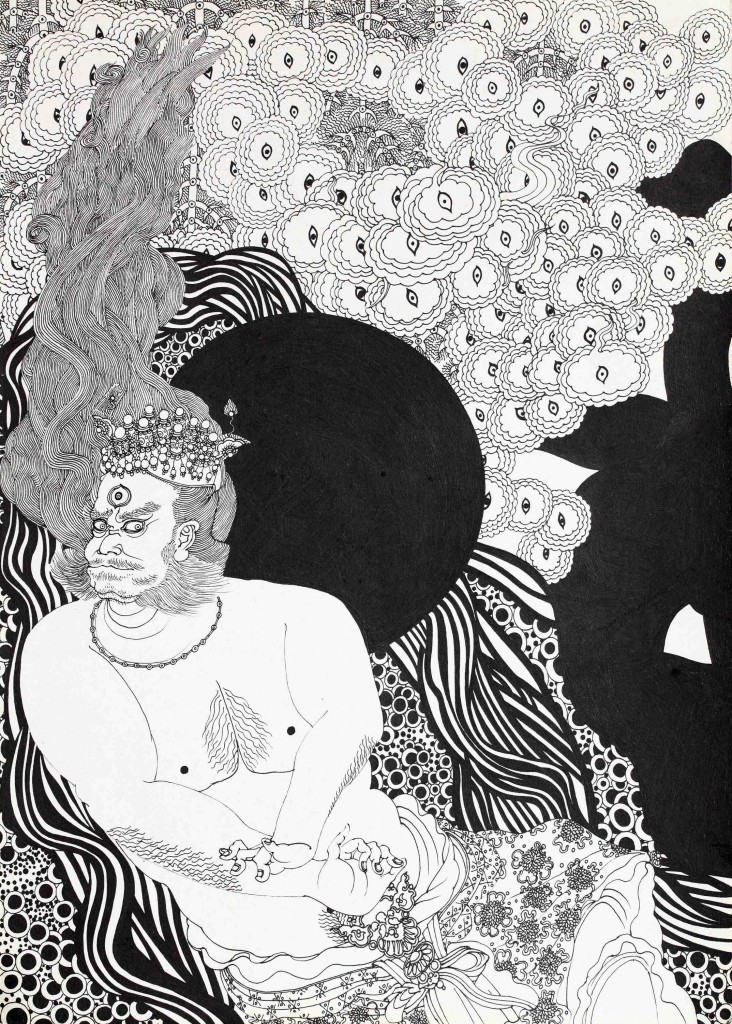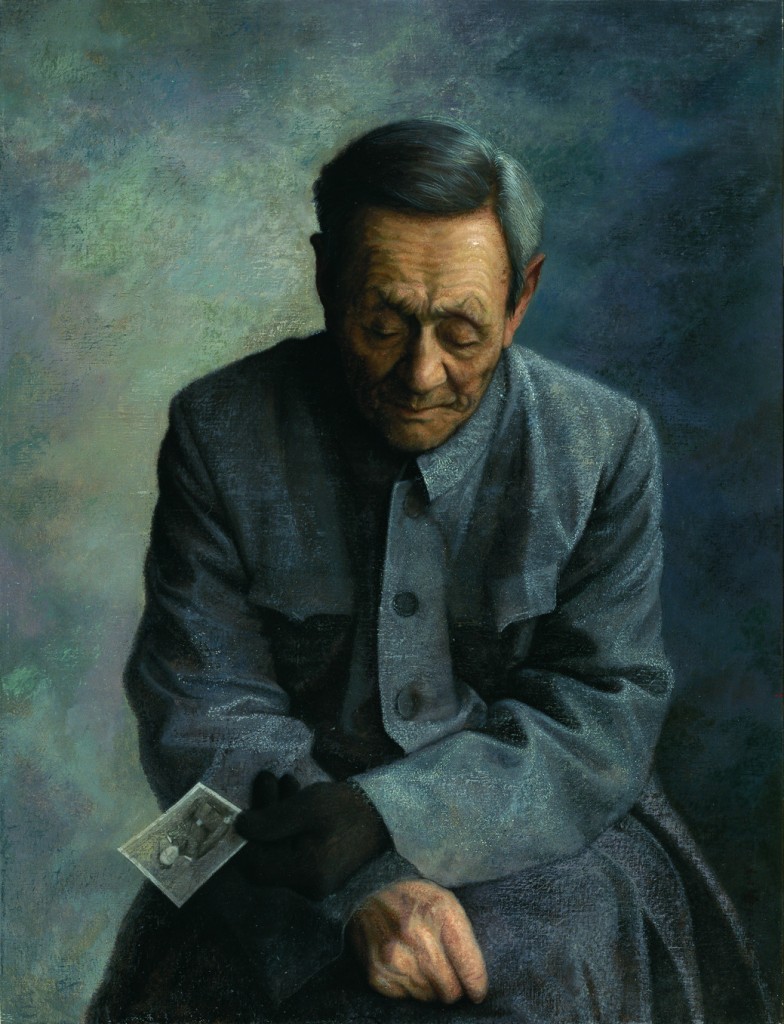“SCATTERED LETTERS”
Wang Yufeng Solo Exhibition
In this first solo exhibition, paired with poetry by regarded modern and living Chinese poets, the young Shenyang-based painter Wang Yufeng addresses questions of personal language and relatedness versus disconnect from the fruits of our dexterity in works that explore ‘a technological mode of Being’ (Heidegger). Presenting the viewer with an evolution of devices, Yufeng’s work captures the essence of pre-modern, traditional artisanship on the cusp of a gentle, quietly manageable technological revolution in the form of the typewriter. – Dr D. Gilhooly
“SPIRIT IN THE TIME OF TAICHI”
Ju Ming Exhibition
At the age of fifteen, Ju Ming began learning what would be the foundation of his technical skills when he was apprenticed to Lee Chin-chuan, a master woodcarver from the Temple of the Empress of Heaven. Ju Ming ran a highly successful studio in his twenties but his real passion lay in developing his own oeuvre. Ju Ming took up another practice of Taoism, taichi. Ju Ming developed greatly from this practice and started thinking about sculpting works on the theme of the practice. Yet more than simply capturing a physical stance, the process of both artists is indelibly linked to their practice. Much as an actor gets ‘into character’ in preparing for a role, Ju Ming is said to have practiced tai chi boxing whilst creating his Taichi series.
“MAKING PEACE WITH HISTORY”: THE PEACE SERIES
Jiang Shan Chun Solo Exhibition
Hidden in a desk drawer for now over sixty years, Jiang Shan Chun’s acorn of inspiration in bringing to light shared histories was photographic material he discovered several years ago on a trip to his hometown of Hohhot, Inner Mongolia. Dating from the period shortly after the Founding of the People’s Republic of China in 1949, these photographs show visages of great innocence and expectation in a refined body of work that has culminated in the Peace series. – Emily de Wolfe Pettit
“DESERT, SPIRIT, ROCK”: LANDSCAPES OF THE MIND
Indigenous Australian Desert Art and Chinese Scholar’s Rocks
The Aboriginal people of Australia and my mother’s family share a long connection, both to each other, and in dedication of their lives to the country they love. My maternal grandfather, a true pioneer of the deep north-east of the continent, is all too familiar how equally harsh the flora and fauna of the lusher tropics can be – and over the course of now near one hundred years he has learnt too her unexpected secrets to sustaining human life. For an artist and appreciative eye, Australia possesses enviable natural beauty and a unique richness of bio-diversity. Compounded to this is exquisite light, infinite textural capacity, and the endless, intoxicating layers of fragrance.
“TESTING FREEDOM’S TEMPERATURE” PART II
The Fine Art Society, London: A Joint Exhibition
“We are delighted to announce our collaboration with one of the oldest dealerships in the United Kingdom, The Fine Art Society, London.
On show will be a satellite of ‘Testing Freedom’s Temperature’, the popular joint exhibition held at our Beijing gallery last year, featuring oil paintings by Chi Ming and charcoal and ink works by J S Tan. The exhibition will feature the very latest oil paintings and works on paper by Chi Ming.
The opening takes place at the Fine Art Society, 148 New Bond Street, London, W1S 2JT, on Wednesday, July 3rd, 2013. The show runs until July 26th 2013.”
– Emily de Wolfe Pettit
“BECOMING” MAO YAN AND FANG KAI
The First in a Series of Master-Protégé Exhibitions
The myth of Wu Tao-tzu tells of a Tang dynasty painter who was one day looking at a mural he had just completed. He clapped his hands and the temple gate in the mural opened. He entered the gate and the painting vanished from the wall. Wu Tao-tzu was never seen again. But he has returned to the imagination of many contemporary artists who, troubled by our age of instant gratification and tossed in a sea of near two billion Chinese clamouring for a house and car, are pondering more than ever the nature of man’s infinite longing for that elusive, other home. Mao Yan, the renowned master of Chinese Neo-Realism, and his protégé Fang Kai, have heeded that longing and through the power of their portraiture kept that spiritual or artistic hope alive.
Looking into one of Fang Kai’s portraits is like looking at a ghost in limbo. Some have surrendered to waiting (Portrait of MK), some gaze in awe of what is to come (Night Light Man) while others, perhaps having waited for too long, have turned hostile, a little impetuous even (Seated Man 1) at the silence of their watcher. Fang Kai masterfully employs his own blend of chiaroscuro, a method of dramatically lighting dark subjects by a restricted and often unseen source. Modern man has since grown very suspicious of anything existing outside his own mind, let alone a divine light. But by drawing the solitary figures out of their vast shadows with a cold, crystalline light, Fang Kai seems to be teasing not only the soul out of its shell, but modern man out of his subjective cave. – Michelle Ho
“TESTING FREEDOM’S TEMPERATURE”
Chi Ming & J S Tan Joint Exhibition
“Some time ago, Carl Jung declared that “our fearsome gods have changed their names – they now rhyme with -ism.” Like the Monkey with magical powers in Journey to the West, we swept aside all heavenly authority and erected our great institutions of democracy, capitalism and science. Their heavenly hosts, including cynicism, secularisation, disenchantment and skepticism followed soon after. But lately, the world has started to grow tired of these -isms. And the rise of China, likened to some irrational and uncontrollable force to the West with its millennia-old culture of realism and a philosophy more content with marveling at, rather than demystifying, every working of the universe, has been uncannily timely. For while the revolution of radical rationalization is still unfolding, a newfound mystification with technology and a more primordial, spiritual state of being is rearing its head. And in the works of two talented young artists Chi Ming and J S Tan are the ominous stirrings of this new intersection between disenchantment and a counterculture of re-enchantment.”
– Michelle Ho
“GENESIS, FAITH & INDOCTRINATION”
Meng Liping Solo Exhibition
“Unassuming and unaffected, Meng Liping would never admit to the honour of what in China is termed a bo xue zhi ren – ‘a studious, well-read person’. Yet Liping approaches exactly that in her level of inquisitiveness, bolstered by her consistent, independent research. This artist’s passion for historical, and moreover, archival fieldwork is clearly apparent at various stages in her collage works presented in this exhibition. Impressive too is Meng Liping’s broad interest in world affairs beyond a home country whose physical borders she has not yet crossed. Where so much is made of the disjuncture between East and West, from Marco Polo to Rudyard Kipling, here is an artist who inherently bridges two worlds through her laterally-engaged works. Concurrently, Liping’s life experiences have prompted her tore consider socially-contrived mantles of faith, discerning doctrine from inner conviction, and external conditioning from self-determination – and indeed, the very genesis of life, and our ability to survive in the face of adversity. Liping’s wide- ranging interests are satiated through a diverse selection of works that displays both aesthetic delicacy and boldness.”
– Emily de Wolfe Pettit
“A CULTURE OF ENTITLEMENT”
J S Tan Solo Exhibition
“The first time I encountered one of his early works the influence of Lucian Freud was obvious, but so was the sensitivity to his subjects and the quality of his draughtsmanship. Blessed with an intellectual curiosity that guides his choice of subjects his body of work has grown to include challenging and probing topics. He has a willingness to explore and push himself through new genres and styles to test his own boundaries. He feels no need to repeat something already conveyed, and yet there is a continuity to the spirit of the work he produces…As a collector or observer, I seek representations of beauty in a complex, sometimes difficult world and I am interested in other people’s views of what beauty is. And I see this in JS’s work. I was pleased to read in a recent interview that JS himself said he was “searching for a type of beauty” even as he moves from the figurative into more abstract work. Long may that search continue and… we enjoy the fruits of that labour.”
– Ian Charles Stewart
“FANTASIA IN INK MAJOR”
Qu Weiwei Ink Exhibition
In broad terms, one could evince that the impetus behind ink artists of past eras contra many artists active today, has moved from the creation of works for societal escapism to creation for societal relevance, from the preserve of an elitist group to evermore a tool for examination of the quotidian. However, this shift has brought with it some challenging questions. How can calligraphy, at once the great unifier amongst the many dialectal tongues in China and mysterious veil from the outside world, be ‘unyoked’, be penetrated by international audiences, and moreover be utilized to better capture the shadings of a world more thoroughly globalized? How indeed can the standard scripts be reinvigorated by contemporary calligraphers, who rely on the same forms realized as early as the fourth century AD, reformulated already many times in the centuries thereafter, and, like ink painting, where preference for impressionistic evocations of the spirit of man and nature rather than realistic renderings of form, were far ahead of chapters of modern Western art? How does the dislocation of man and nature in a contemporary society that has severed its once deep respect for the natural environment manifest itself when conceptually removed from the Shan Shui landscapes of collocated harmony? – Emily de Wolfe Pettit
“THE REFUTATION OF TIME”
Jiang Shan Chun Solo Exhibition
As the esteemed Neo-Realist artist Yang Fei Yun has said of his former student Jiang Shan Chun: “Life has its distinct traits and tracks. After years of being a teacher and tending his share of bonsai plants, Jiang Shan Chun understood like never before: to nurture is to perfect one’s self; to educate is to live as an example; to judge is to self reflect; and to act vigorously is to be merciful.”
Spanning an impressive range of styles and techniques and drawing inspiration from earlier Eastern and Western painting traditions, Jiang is capable of creating abstract oil works that impart a sensory experience usually reserved for ink brush works in their delicate chromatic possibilities through apparent solids and voids; his tempera portraits (a medium most popular between the 13th-15th centuries amongst elite European artists, before being surpassed by oil) hover between Western Realism and Eastern abstraction; his ink works in traditional Chinese scroll format present humble subjects that become exceptional through the verisimilitude and delicacy with which he renders the subject; and he effectively translates writing into painting through his depictions of lofty Ancient Chinese analects of Taoism and Buddhism, Confucius and Zhuangzi, in Realistic style on large yet extremely detailed oil on canvas paintings. To engage deeper into any of the three strands of art practice mentioned above and specifically the work of this artist, his approach, subjects for study and the aesthetic effects of his works, demands engagement withChinese philosophy and this artist’s philosophy of life. – Emily de Wolfe Pettit
